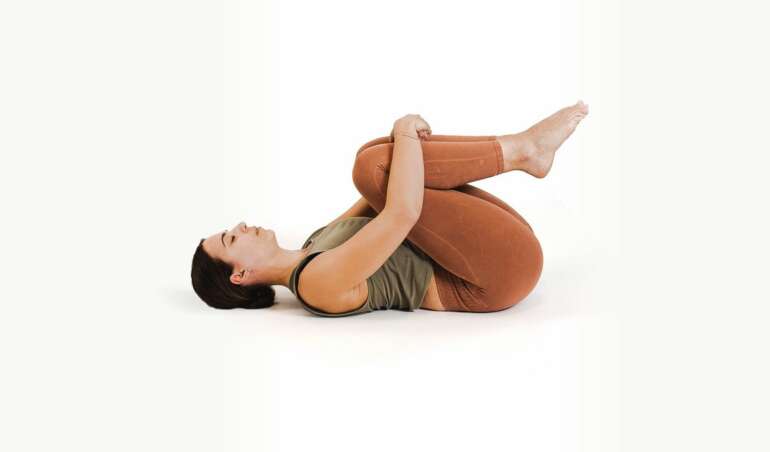
5 Best Yoga Poses for High Blood Pressure patients
The rising high blood pressure cases across the world have become a cause of worry. Stress, sedentary lifestyle, genetic factors, obesity, having too much salt or potassium in your diet, are among the risk factors. Blood pressure is the pressure of blood pushing against the walls of your arteries, according to CDC (Centers for Disease Control and Prevention). Arteries carry blood from your heart to other parts of your body. High blood pressure means the elevated pressure is too much for your arteries and organs can handle.
While there are medications to keep your blood pressure in check, Yoga can help lower blood pressure naturally. Although there are not enough scientific studies to prove that Yoga can cure the condition, but it can surely help one to manage the condition.
According to studies, Yoga helps one relax and focus on the present and shifts focus from the sympathetic nervous system and the flight-or-fight response to the parasympathetic system and the relaxation response. As a result, Yoga helps in lowering breathing an heart rate, decreases blood pressure, lowers the levels of stress hormones and increase blood flow to the vital organs.
According to a study, Yogic practices inhibit the areas responsible for fear, aggressiveness and rage, and stimulate the rewarding pleasure centers in the median fore brain and other areas leading to a state of bliss and pleasure. The study adds that this inhibition results in lower anxiety, heart rate, respiratory rate, blood pressure, and cardiac output in students practicing yoga and meditation. In addition, Yoga is also known to significantly reduce systolic blood pressure, diastolic blood pressure, mean arterial pressure, and orthostatic tolerance. Another study says twelve weeks of Iyengar yoga produces clinically meaningful improvements in 24-hour systolic blood pressure and diastolic blood pressure.
You can practice the following Yoga Asanas for keep your blood pressure in check:
1. Butterfly Pose (Baddha Konasana)
Baddha konasana or Butterfly pose helps to relieve stress and fatigue and stimulates heart. It also improves blood circulation and digestive system. However, people with high or low blood pressure who want to practice it should do it under expert supervision.
Steps to do Baddha Konasana
Sit straight on the floor with soles of the feet pressing each other to look like a winged butterfly
Bring your feet as close as possible to the pelvis
Hold the feet with hands and flap your legs
While inhaling feel the energy the energy in your spine
With each breath out feel relaxed
Stay in the position for 2-3 minutes
2. Downward-Facing Dog (Adho Mukha Svanasana)
The Downward Facing Fog Pose or Adho Mukha Svanasana is quite effective in managing high blood pressure. It stretches the spine and the shoulders and releases trapped stress. It is known to bring down high blood pressure and promote overall blood circulation. This asana also helps improve cardiac functioning.
Steps to do Adho Mukha Svanasana
To do the asana, start with the table top position.
Lift your knees upwards and stretch your arms forward keeping the palms inward.
Lift the knees so that your hip can go as high as it can.
The body should resemble an inverted V.
3. Bridge pose (Setu Bandha Sarvāṅgāsana)
From improving sleep quality, relaxing mind and body to controlling high blood pressure, Bridge pose is effective at many levels. Just do it in expert supervision in case of high blood pressure. The pose can help in opening the chest. It energies and fill your boy with fresh energy. It stretches the neck and spine and helps one relax deeply at physical and mental level. While it stimulates the abdominal organs and lungs, it also calms the mind thus alleviating stress and mild depression. It helps address the issue of high blood pressure and prevents sinusitis. As it improves blood circulation across the spine calming the nerves, it helps in improving sleep quality.
Steps do Setu Bandha Sarvāṅgāsana
Lie on the Yoga mat with your back on the floor.
Keep your shoulders and feet apart slightly.
Then bend your knees.
In the next step, place your hands on the floor with your palm facing down.
Now, take the breath in and lift your pelvis.
Keep your shoulders and head flat.
In this pose take a few breaths in and out and then slowly lie down on the floor.
4. Uttanasana (Standing Forward Bend)
Reducing stress in case of blood pressure is important in managing the condition. Uttanasana helps alleviate stress, fatigue and anxiety and rejuvenates your body and mind. It also stretches your spine, neck and back while also working on your hips, hamstrings, and calves.
Steps to do Uttanasana
Stand in mountain pose.
Keep with your feet apart from each other.
Raise your arms and slowly bend forward
Bring your fingertips to the floor
Release through the head and breathe
Slowly come back to the original position
- Corpse Pose (Shavasana)
Shavasana or corpse pose means bringing your body into a deep state of rest or relaxation. Shava means corpse which means the asana aims at perfect stillness of body and the mind which is beneficial in giving deep rest to us after the yoga routine or at the end of the day. The pose has immense recuperative benefits and refreshes the mind and body like no other pose does.
Steps to do Corpse Pose
Lie on your back and let your body comfortable and loose
Your legs, feet, knees, back should be completely relaxed with no tension in muscles
Arms should be kept on the ground with palms facing upwards.
Take few deep breaths and bring your attention to each part of the body staring from your toes.
Move your attention slowly up to foot, knees, thighs, back, shoulders as you progress with the asana, trying to loosen up your muscles in each part of the body as much as you can.
The body should feel light like a feather.
When you feel your entire body has been relaxed, slowly come out of the asana.
Other good articles –
https://www.baliyogaschool.com/benefits-of-sun-bath-and-normal-bath/
https://www.baliyogaschool.com/imbalanced-diet-and-food-fads/
https://www.baliyogaschool.com/naturopathy-a-natural-physcian/
https://www.baliyogaschool.com/naukasana-boat-pose/
https://www.baliyogaschool.com/what-is-shatkarma-write-the-name-of-all-types-of-shatkarma/




